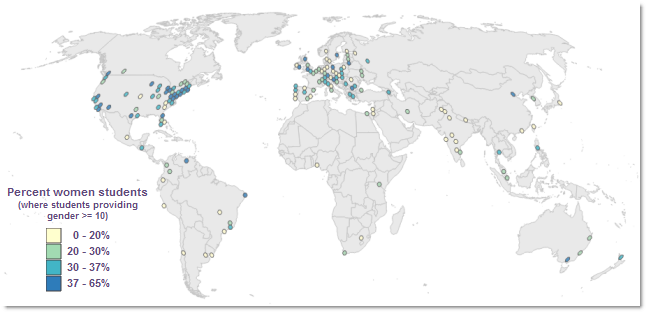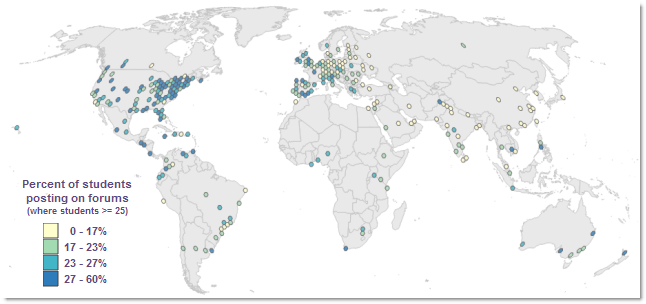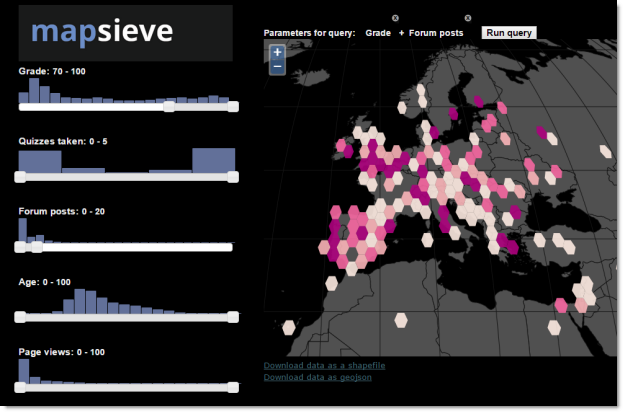In the past five years, massive open online courses (MOOCs) have created a buzz in the world of higher education, causing colleges and universities to rethink their online education outreach strategies. Although we know quite a bit about who takes MOOCs, there has been less study on where the students are coming from and how students from unique places approach the course in different ways.
We mapped aspects of interaction by over 35,000 students in the pilot offering of Penn State’s Maps and the Geospatial Revolution MOOC. Aggregating these locations into hexagonal bins helps reveal regional patterns of student participation. Students from the United States and western Europe showed higher percentages of forum posting and participation by women. Students from eastern Europe were less likely than their US counterparts to drop the course after the first quiz, and more likely to retake quizzes to get a higher score. Students from southeast Asia also tended to retake quizzes on a more frequent basis.
Going beyond static mapping, we are currently working on interactive tools that allow an analyst to adjust these parameters of student engagement and see a map drawn on the fly. We are also testing automated methods for detecting parameter combinations that have high levels of spatial autocorrelation.
Read more



